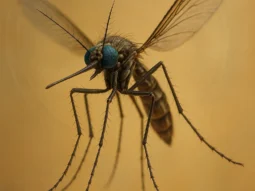
Pest Control Checklist for Schools and Educational Properties
A safe and healthy learning environment is a top priority for educational institutions. That's where a Monthly School Pest Control Inspection Checklist comes into play. It's not just about keeping the creepy crawlies at bay; it's about safeguarding health, comfort, and property.
You're tasked with the well-being of students and staff; part of that is managing the unseen threat of pests. Regular use of a pest control checklist helps you stay ahead of potential infestations, ensuring your school remains a clean and inviting place for education to thrive.
Everyone plays a role in maintaining a pest-free environment, from facility managers to custodial staff. With this checklist, you'll have a structured approach to prevent and address any pest-related issues, aligning with health regulations and providing peace of mind for all occupants of your educational facility.
Why pest control is important in schools and educational institutions
Preventing Infestations
Unwanted critters can wreak havoc in a learning environment. That's why prevention is key. By using a Monthly School Pest Control Inspection Checklist, you can avoid the costly and disruptive process of eradicating pests once they've settled in. This proactive approach stops infestations before they start, safeguarding the integrity of school buildings. Remember, pests are not just nuisances; they can seriously damage structures, books, and even technological equipment. It's not only about sighting cockroaches or rodents; termites and other less noticeable pests can cause structural damage that's expensive to repair.
Regular inspections ensure that small problems don't become big ones. By keeping an eye on potential entry points and food sources, you can maintain an environment that's inhospitable to pests. It's about being vigilant—checking those out-of-the-way places that might harbor pests and addressing issues like standing water, which can attract mosquitoes and other insects.
Protecting Student Health and Safety
The wellbeing of students and staff is a top priority, and a clean, pest-free environment is crucial for health and safety. Pests can be carriers of diseases such as salmonella, Hantavirus, and even asthma-inducing allergens. By conducting monthly inspections, you're not just checking off a task—you're taking active measures to reduce the risk of disease transmission. It's also about comfort; no student should have to focus on their studies while worrying about pests in their surroundings.
Beyond health, there's also the element of psychological safety. The presence of pests can cause anxiety and distraction, which are detrimental to the educational process. By keeping pests at bay, you're ensuring that the school environment supports mental focus and emotional wellbeing.
Implementing rigorous pest management protocols and making sure that every corner of your school is inspected regularly not only keeps students physically safer but also sends a message that you care about their overall comfort and success. Educational facilities stand as role models for public health—showing that prevention and maintenance are valuable skills in creating a secure and inviting learning space.
Creating a pest control checklist for schools
When creating a pest control checklist for your educational facility, it’s crucial to tailor the approach to your unique needs. Below are actionable steps that will help streamline the process and ensure a thorough and effective pest management plan.
Identifying Potential Pest Problems
Your first step is to identify the types of pests that could possibly infest your school. Some common culprits include rodents, cockroaches, ants, and flies. Conduct a walk-through of your entire school, paying close attention to:
- Food service areas such as cafeterias and snack bars
- Dumpsters and waste disposal areas
- Classrooms and lockers where food is often consumed
- Storage areas where there are cardboard boxes and clutter
Keep an eye out for signs of pests like droppings, nests, or damage to property. By recognizing potential risks, you can take early action to prevent infestations.
Establishing a Regular Inspection Schedule
Consistency is key in pest management. Set up a monthly inspection routine that aligns with the school's operating calendar. For efficacy, assign specific individuals or hire professional pest controllers to carry out these inspections. Ensure the checks occur during the school year as well as over breaks and holidays when pests might take advantage of the quiet to establish themselves.
Implementing Preventive Measures
An ounce of prevention is worth a pound of cure, especially when it comes to pest control. Enhance your routine maintenance with:
- Sealing entry points such as cracks and crevices in walls or foundations
- Installing door sweeps on exterior doors to block access
- Repairing damaged screens on windows and vents
- Regularly trimming landscaping to avoid contact with building exteriors
- Maintaining cleanliness throughout the premises
- Properly storing food to eliminate attractions for pests
- Educating staff and students about the importance of preventing pest infestations
Hiring Professional Pest Control Services
While in-house staff can manage some aspects of pest control, certain situations call for professional pest control services. These experts are trained in identifying and treating a range of pests, using specialized equipment and strategies that go beyond the scope of routine maintenance. Professional services can offer both treatment for active infestations and preventive strategies that safeguard your school against future problems. Consider partnering with a reputable pest control company to keep your campus pest-free.
Best practices for schools in pest control
Maintaining Cleanliness and Hygiene
Ensuring cleanliness and hygiene throughout the school is paramount. Pests are attracted to places where they can find food and shelter. Frequent cleaning of cafeterias and break rooms minimizes the opportunities for pests to thrive. It's critical to address areas with the most common pest activity promptly. Regular sanitation efforts, especially in locations with prior pest occurrences, play a vital role in keeping these unwelcome guests at bay.
Implement several key strategies:
- Restrict eating to designated areas
- Sanitize facilities regularly
- Clean gutters and direct water away efficiently
- Address sources of moisture like leaky pipes
Proper Food Storage and Waste Management
Food storage and waste disposal are areas that require strict protocols. Garbage should be disposed of daily using sealed garbage containers, reducing the chances of attracting pests. Location is also crucial; ensure that dumpsters and other disposal units are placed at a considerable distance from the school buildings. Proper storage of food—by sealing it correctly—is just as pivotal. This action helps to prevent pests from accessing easy nutrition and shelters.
Adherence to these practices is essential:
- Dispose of food-related garbage in enclosed bins
- Move disposal sites away from the school vicinity
- Implement first-in-first-out food serving protocols
- Clean spillages immediately to avoid attracting pests
Sealing Entry Points
Pests often enter buildings through cracks and openings that may be overlooked. It's important to regularly inspect the school's exterior and seal any potential entry points. This process involves tasks such as fixing damaged grouting, replacing weather stripping around doors and windows, and ensuring that areas like vents and eaves are properly protected against pests.
Key actions include:
- Sealing cracks and crevices in external walls
- Maintaining the integrity of window and door seals
- Regular inspections for new potential entry points
Educating Students and Staff
An educated community is a powerful defense against pests. When students and staff understand how their actions impact pest management, the entire institution becomes more proactive at preventing infestations. Educate the school's members on the best practices for managing waste, recognizing signs of pest presence, and the importance of reporting them. Engaging in regular educational initiatives about pest control underscores the role everyone plays in maintaining a healthy environment.
Focus on these educational points:
- Impact of individual actions on pest control
- Recognition and reporting of pest sightings
- Good practices for personal and communal spaces
By integrating these best practices into the daily routine, schools can significantly reduce the chances of infestations and maintain a healthy learning environment. Remember, pest control is an ongoing process, and collaboration among all members of the school community is crucial for success.
Dealing with specific pests in schools
Educational institutions face unique challenges when it comes to maintaining a pest-free environment. Tackling pests head-on requires a targeted approach for each type of intruder. From gnawing rodents to bothersome insects and birds, knowing the specifics of pest control can be instrumental in keeping your school safe and sanitary.
Rodent Control
Rodents, like mice and rats, are attracted to schools because of the readily available food and shelter they provide. To manage these pests:
- Look for signs of rodent activity such as droppings, gnaw marks, or nests.
- Seal off entry points including small gaps and cracks in the building's exterior.
- Store food securely and dispose of garbage daily in sealed containers.
- Address moisture issues by repairing leaky pipes and ensuring proper drainage outside.
Engaging in regular maintenance checks can help nip rodent problems in the bud, ensuring these critters don't become permanent school residents.
Insect Control
Insects can be more than just a nuisance; they pose risks to health and hygiene and can damage school property. Here's how to tackle them:
- Reduce moisture by fixing leaks and ensuring gutters are unclogged to deter breeding grounds.
- Clean areas prone to insect infestations, such as cafeterias and locker rooms, thoroughly and regularly.
- Inspect and clean incoming packages to avoid stored-product insects such as beetles or moths.
- Educate students and staff on the importance of maintaining cleanliness to prevent insect attraction.
By incorporating these practices into your regular cleaning routines, your school can greatly reduce the likelihood of insect infestations.
Bird Control
Birds can create unsanitary conditions and damage structures with their nests and droppings. To manage bird-related issues:
- Install barriers such as netting or spikes to prevent birds from nesting on school buildings.
- Keep outdoor dining areas clean and free of food scraps that could attract birds.
- Use trash bins with lids to deter birds from foraging for food.
- Consider the timing of outdoor activities to avoid peak bird activity hours, if possible.
While birds can pose certain challenges, with the right preventive measures, their impact on the school environment can be effectively diminished.
Conclusion
You now have a solid foundation to tackle pest control in your educational institution effectively. Remember, the key to a pest-free environment is vigilance and proactive measures. By staying on top of cleanliness, waste management, and regular maintenance, you're setting the stage for a healthier, more inviting educational space. Embrace the strategies outlined to keep those unwelcome guests at bay and ensure your school remains a safe haven for learning and growth. Stay diligent, and you'll not only prevent infestations but also contribute to the overall well-being of your school community.
We hope you enjoy these informational articles. If you'd like to learn more about our eco-friendly pest control services, call (844) 955-2447.
Read More
Your Path to a Pest-Free Home or Business
Romex Pest Control
We are committed to protecting you, your children, and your pets with our eco-friendly, child-friendly, and pet-friendly guaranteed pest control solutions.
Romex Pest Control is fully insured and licensed in Texas, Oklahoma, Louisiana, and Mississippi.
Service Areas:
Hours
M-F 8 am–5 pm
Sat 8 am–2 pm
Sun Closed
Established 2016 © Copyright 2025 Romex Pest Control










